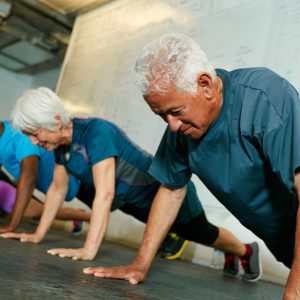If your exercise program combines strength, flexibility and mobility exercises its best that you know your ABC’s to get the most out of your efforts.
A
Like the alphabet, we always start with A.. “A” stands for “Articulations”, which is another way of saying joints. Many mobilisation exercises target the joints and are best done before stretching and strengthening exercises. There are two main reasons for this. The first reason is to allow your body to develop strength in its “new” range. Joint mobility exercises try to increase the amount of movement that a stiff joint has. After an effective joint mobilisation exercise, the body should have more freedom to move into greater positions.
The second reason is that moving the joints activates the nerves and causes a signal to the brain which makes the muscles more alert. For example, the muscles around the hip area respond directly to movements of the feet. As the joints in the foot move, they send signals to the brain which then activates the hip muscles to keep us upright and balanced.
B
After A comes B. “B” is “Balancing out the muscles” which is achieved by stretching. It is important to note here that stretching in this sense only applies to tight muscles. The muscles in the body often work in pairs, and just like the other organ pairs in our body if one of the two is lazy, the other compensates by picking up the slack. This often leads to muscle tension.
By stretching the tight muscles, they are temporarily relaxed and allow the body to strengthen the weaker muscles rather than simply making the tight muscles even more tense. One of the muscles that commonly gets tight is the pectoralis muscle which sits in the front of the shoulder area. Stretching out this muscle allows the shoulder and back muscles to benefit the most from strengthening exercises such as row type movements.
C
The final part of the exercise ABC is to “Challenge the muscles” using strengthening exercises. Now that the joints and the muscles are ready for action, loading up the muscles with external weight develops their strength and leading to the greatest improvements. The key here is Challenge. Without challenge, there is no change. The goal for a strengthening exercise should be to aim for around a 7/10 difficulty level, where 10/10 is the maximum. This ensures that the muscle is challenged enough to make a change, but not to the point of injury.
Now you know your ABC’s next time you can follow these!

